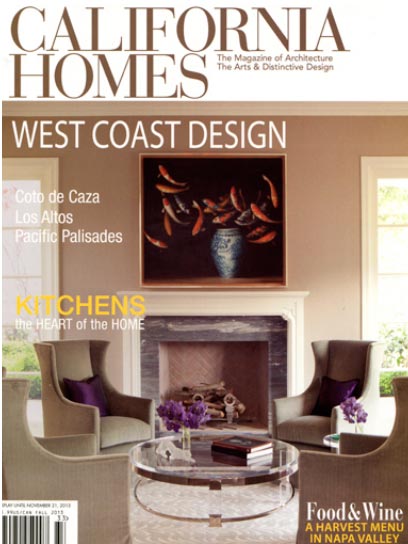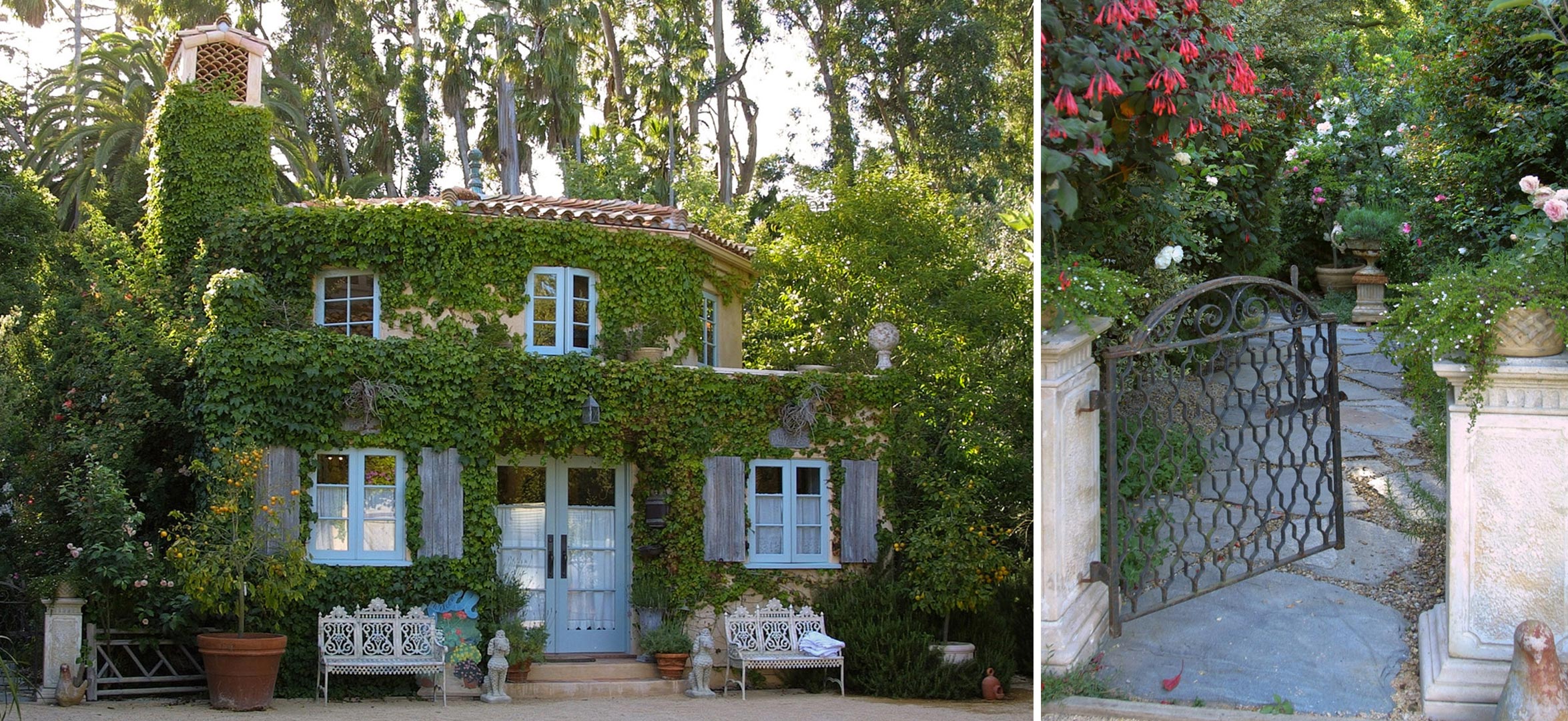
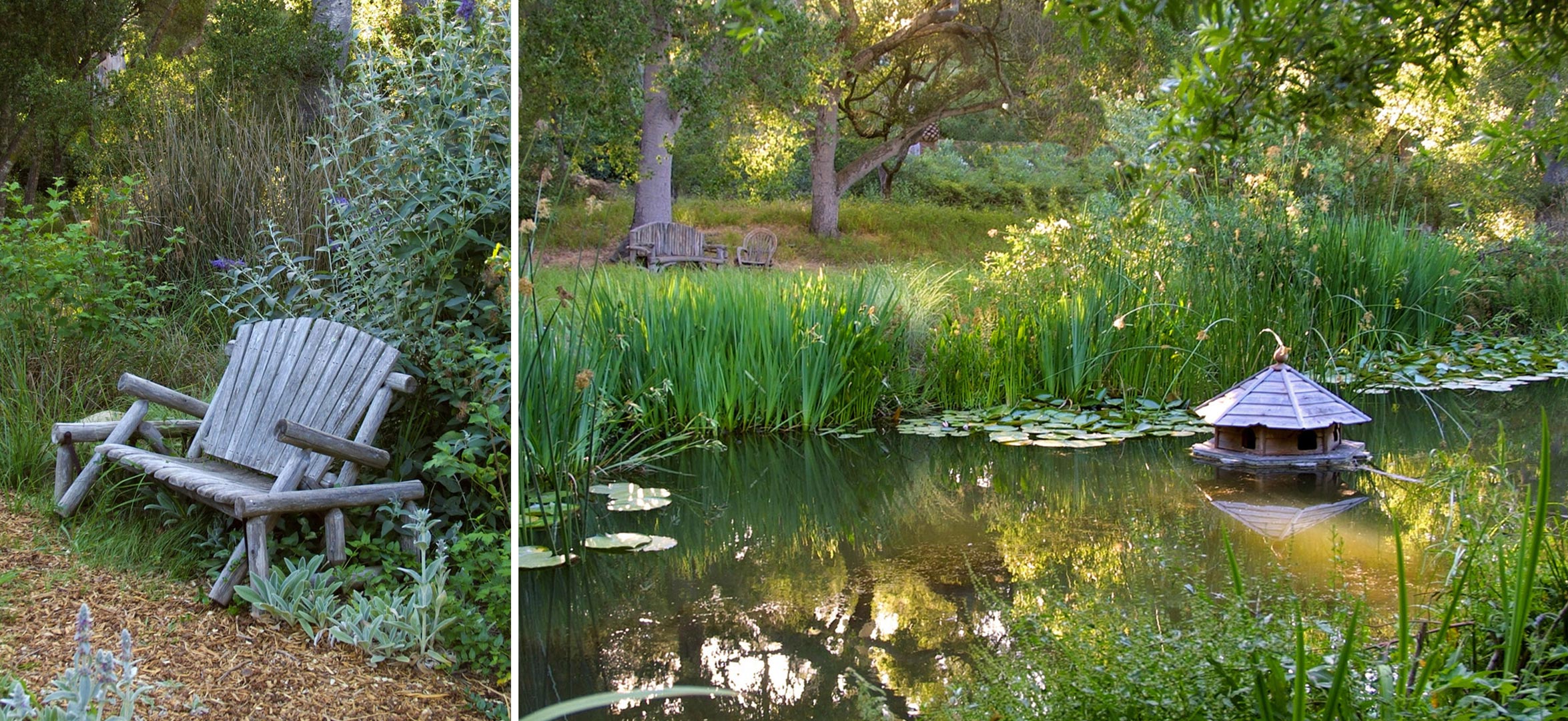

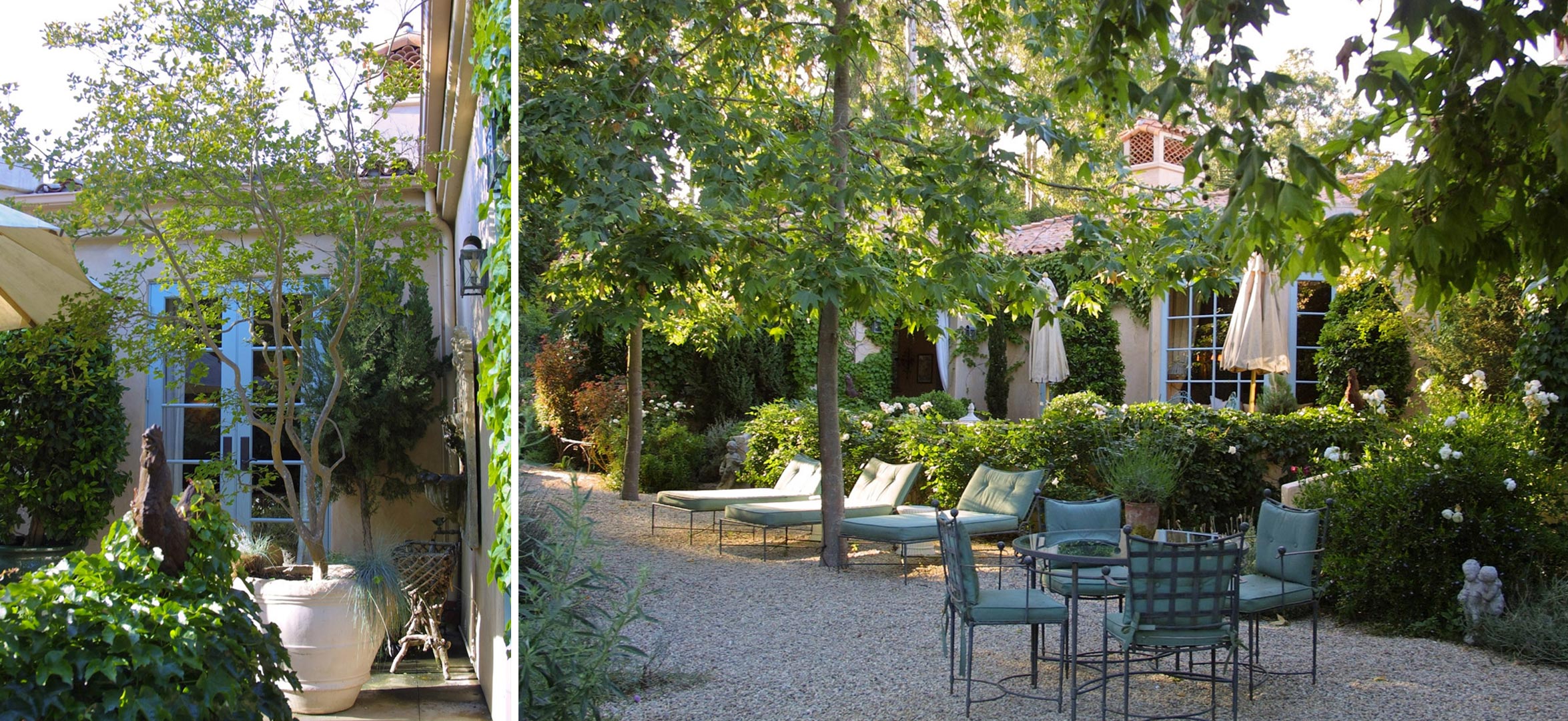
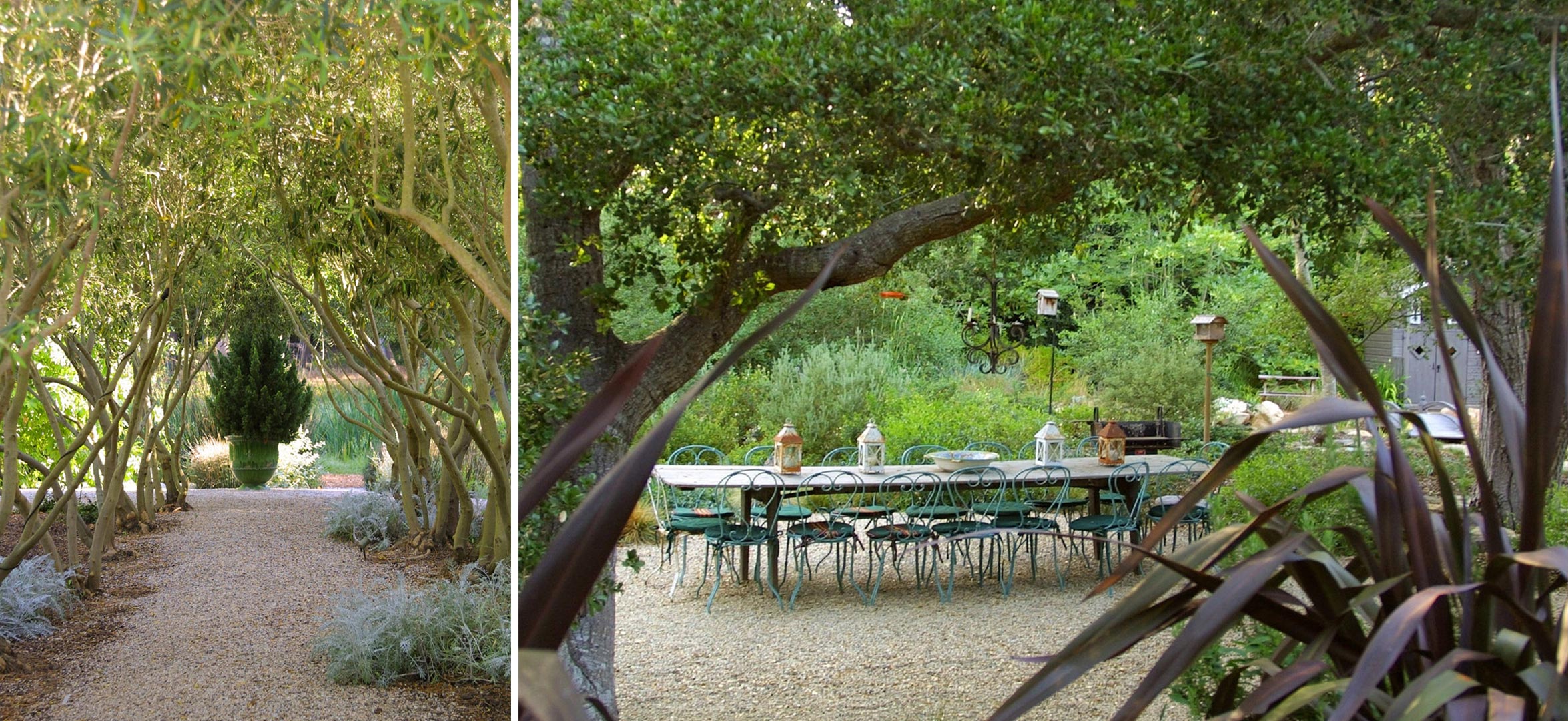
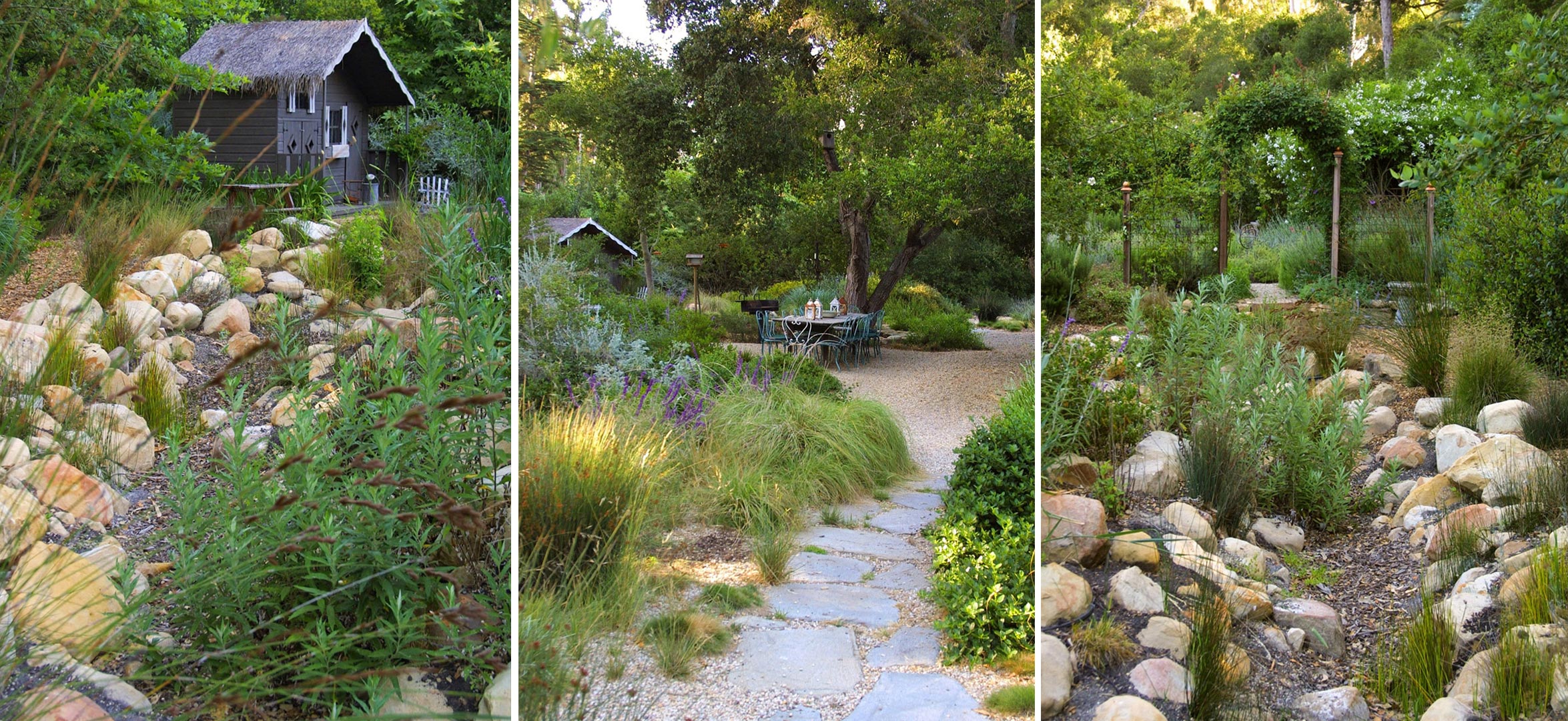
East Montecito
Thriving Wilderness Retreat: The Landscape Design Challenge
It was love at first sight for this Montecito couple. The minute they saw the land, they knew they had found their Shangri-la. Two acres of poison oak, eucalyptus and Coast Live Oak sandwiched between a 45-acre creekside watershed preserve and 50 heavily-treed acres of the old Bacon estate, the land was beautiful.
Site Challanges
The only hitch was it was considered unbuildable. The engineering challenges of managing subsurface water, springs and heavy runoff from the surrounding watershed had deterred many would-be builders. The couple, however, would not let such a thing as an 'unbuildable' site stop them. They worked with the engineer and the architect to create a beautiful, modest yet sumptuous 3,500 square foot compound that sits lightly on the land and blends in naturally with the surroundings.
The Solution
The couple, however, would not let such a thing as an 'unbuildable' site stop them. They worked with the engineer and the architect to create a beautiful, modest yet sumptuous 3,500 square foot compound that sat lightly on the land and blended in naturally with the surroundings. The main house, guest house and garage are arranged around a courtyard and give the impression of a small village. The three individual buildings present a much smaller profile to the street than one large structure would, greatly lessening the visual impact the structures have on this very natural setting. When the Bianchis hired Grace Design Associates, Inc. to bring together their landscaping, they had completed construction on their home, thinned the eucalyptus trees, built the pond, completed the walks near the house and installed the larger landscape trees. They envisioned their garden would fit seamlessly into the native landscape, a sanctuary for wildlife and a respite from the workaday world. And although they had an extensive subsurface drainage system and a perimeter flow-diverting wall in case the underground system failed, additional drainage was needed to accommodate increased runoff from the extensive construction being done on the estate to the west.
The Starting Line-up
The main house, guest house and garage are arranged around a courtyard and give the impression of a small village. The three individual buildings present a much smaller profile to the street than one large structure would, greatly lessening the visual impact the structures have on this very natural setting. When the clients hired Grace Design Associates, Inc. to bring together their landscaping, they had completed construction on their home, thinned the eucalyptus trees, built the pond, completed the walks near the house and installed the larger landscape trees. And although they had an extensive subsurface drainage system and a perimeter flow-diverting wall in case the underground system failed, additional drainage was needed to accommodate increased runoff from the extensive construction being done on the estate to the west.
Design Approach
Substantial work had already been done on the site, so when Margie Grace was brought into the project, she followed the intent already established by the homeowners. The garden would fit seamlessly into the native landscape, be a sanctuary for wildlife and provide a respite from the workaday world. The majority of the plantings are drought-tolerant; "garden-y" plants comprise less than five percent of the landscaping and are used only in the area immediately adjacent to the house. Walkways are permeable (gravel, flagstone or mulch over soil). This reduces runoff and allows for infiltration to reduce irrigation needs and help to leach salts from the soil.
The Garden's Features:
100% chemical free landscape maintenance.
No motorized equipment is used to maintain the garden, eliminating, noise, dust and air pollution.
The whole property is a "no kill zone" - animals and insects usually considered pests are part of the ecosystem, providing prey for raptors and food for beneficial insects; plants are planted in wire baskets to protect them from gophers.
Habitat was created for quail (brush piles, shelter shrubs, water and seed-producing plants for feed).
Nesting boxes attract blue birds and bats.
Snags and dead trees were left intact for perches for birds of prey, habitat for grubs (bird food), and bee hives, all of which are actively used by local wildlife.
Lots of small water pockets and the occasional supply of mealy worms attract a variety of winged creatures.
The homeowners keep free-range chickens. A predator-proof chicken coop contains a scavenged monkey house with nesting boxes for sitting hens. Ramps in critical places allow chickens access and egress to and from sheltering niches. A salvaged bus shelter was recently brought in to house free-range turkey hens.
Heavy native soil supports wild grasses with very little supplemental irrigation water.
Where the soil is heaviest, an unlined pond was built; this allows for groundwater recharge, attracts water birds and supports a healthy aquatic ecosystem.
Live Oaks were carefully tended throughout the construction process and continue to be diligently tended.
The driveway is chip-sealed. This slows the rate of runoff, lessening flooding, sedimentation and bank erosion in the neighboring creek.
Deciduous trees shade the south terrace and loggia, allowing passive heat gain in winter months and providing cooling shade in the same areas in the summer months.
The loggia is built to catch a cross breeze and is deeply shaded by eaves. No cooling of this southern room is required.
Drainage: A drainage system, comprised of three large catch basins, a system of 30" diameter pipes and a discharge pipe was already present. To assist with the drainage on the extensively developed uphill neighbor's property, the engineer suggested that an additional section of 30" diameter pipe be installed to connect two of the catch basins. As originally proposed, laying such a pipe underground would have required the loss of three oaks as well as disturbing the existing landscaping and compacting the very heavy soil with the use of heavy equipment. Our solution was to connect the two catch basins with a "dry creek", excavating soil and placing boulders by hand. The dry creek was constructed with the same capacity as the proposed 30" diameter pipe and runs only when/if the upstream catch basin overflows. The dry creek has the additional benefit of intercepting subsurface flow, de-watering the soil, lightening the construction impact on the existing plantings and trees and enhancing the aesthetics of the garden. Soil excavated to form the dry creek was used on-site to create a raised herb garden, eliminating the cost and environmental impact of exporting the excavated soil.
Awards
Montecito Association, Montecito Beautiful Awards, Residential Design 2001







